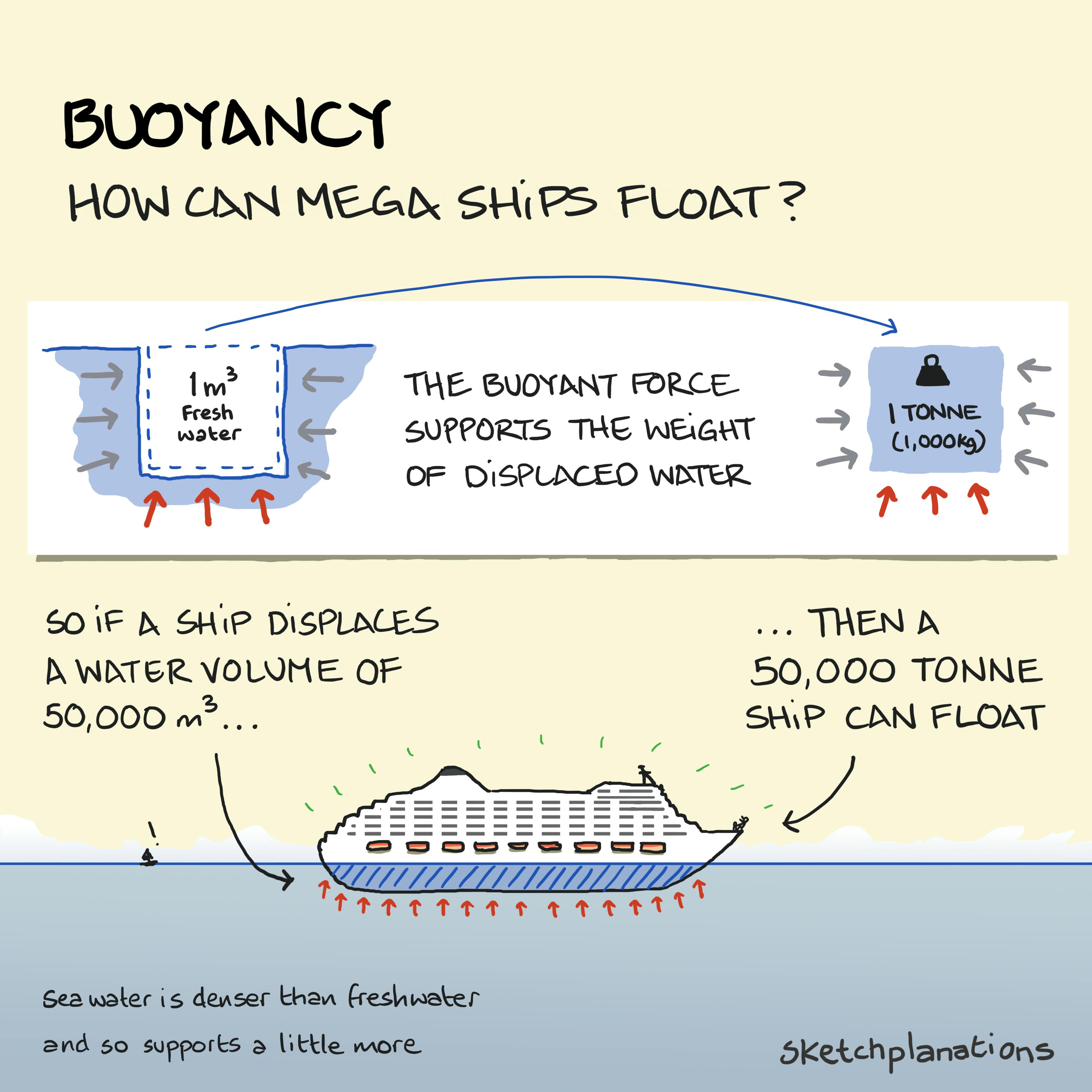Buoyancy

- Prints
- Copied!
👇 Get new sketches each week
It’s always been mind-boggling to me how some of the largest and heaviest things we build on Earth are ships that float on water. Cruise ships are like floating towns, some able to accommodate over 5,000 people. How can it be that these gigantic, impossibly heavy objects made of steel can float on water? The key is displacement and realising the considerable weight that the water already supports.
In a lake or ocean, each drop of water is supported by the water around it. 1m³ of fresh water weighs 1 metric tonne, which is 1,000 kg. If a ship displaces 1m³ of water, the buoyant force of the surrounding water supports 1 tonne of the ship’s weight. Therefore, a ship weighing 50,000 tonnes will just float if it displaces 50,000m³ of water.
Sea water contains salt, which makes it denser than freshwater. As the denser water supports a greater weight, a ship will float slightly higher in salt water than in fresh. The International Load Line, previously called the Plimsoll line, shows how deep a boat sits in the water.
To realise the immense power of water, you can try submerging a biscuit tin in a bath. It’ll put up quite a fight.
Also see:

